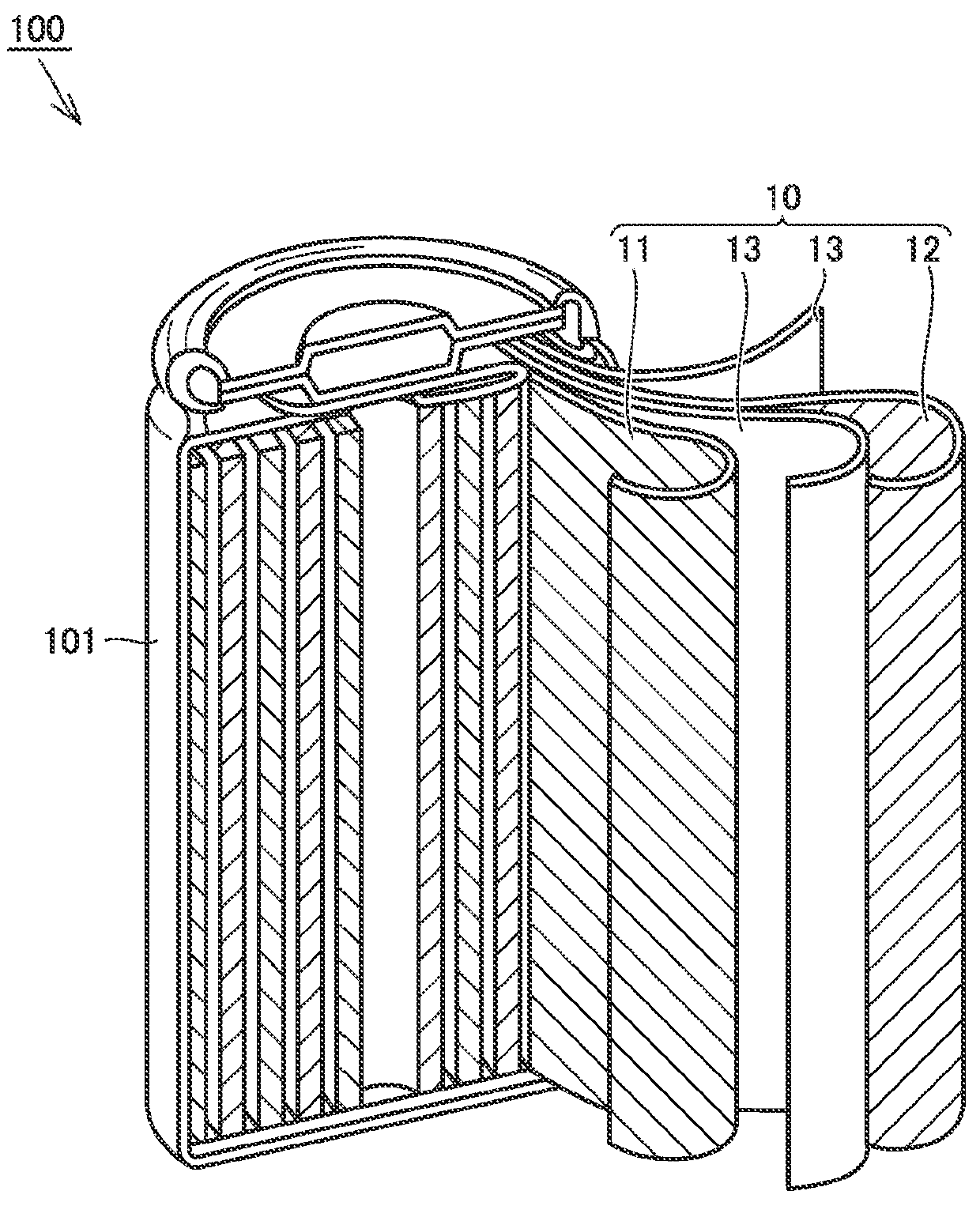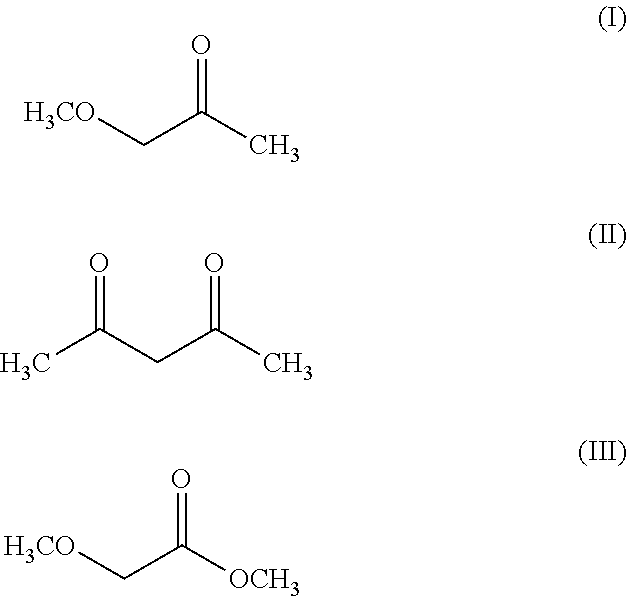Electrolyte solution and lithium-ion battery
a technology of electrolyte solution and lithium-ion battery, which is applied in the direction of electrolytes, cell components, organic electrolytes, etc., can solve the problems of reducing the mobility of li ions, no more improvement of conductivity may be expected, and poor dissociation-promoting ability of chain carbonate, etc., to achieve the effect of increasing the conductivity of the electrolyte solution and reducing the viscosity of the solven
- Summary
- Abstract
- Description
- Claims
- Application Information
AI Technical Summary
Benefits of technology
Problems solved by technology
Method used
Image
Examples
examples
[0060]In the following, examples according to the present disclosure are described. The scope of claims is not limited to the description below.
[0061]
[0062]Each electrolyte solution specified in Table 1 below was prepared. The conductivity of the electrolyte solution was measured. The conductivity measurement of the electrolyte solution was conducted at 25° C.
[0063]
TABLE 1List of Examples and Comparative ExamplesConduc-Electrolyte solutiontivitySolventLi salt[mS / cm]Comp.EC (100 vol %)LiPF6 (1.1 mol / L)8.0Ex. 1Comp.DMC (100 vol %)LiPF6 (1.1 mol / L)7.5Ex. 2Comp.DMC (70 vol %) + EC (30LiPF6 (1.1 mol / L)12.3Ex. 3vol %)Comp.Acetylacetone (100 vol %)LiPF6 (1.1 mol / L)12.2Ex. 4Comp.Acetylacetone (70 vol %) +LiPF6 (1.1 mol / L)12.2Ex. 5EC (30 vol %)Comp.Methyl methoxyacetateLiPF6 (1.1 mol / L)10.9Ex. 6(100 vol %)Comp.Methyl methoxyacetate (70LiPF6 (1.1 mol / L)12.0Ex. 7vol %) + EC (30 vol %)Ex. 1Methoxyacetone (100 vol %)LiPF6 (1.1 mol / L)17.5Ex. 2Methoxyacetone (100 vol %)LiPF6 (0.7 mol / L)15.9Ex. 3Me...
PUM
| Property | Measurement | Unit |
|---|---|---|
| vol % | aaaaa | aaaaa |
| conductivity | aaaaa | aaaaa |
| conductivity | aaaaa | aaaaa |
Abstract
Description
Claims
Application Information
 Login to View More
Login to View More - R&D
- Intellectual Property
- Life Sciences
- Materials
- Tech Scout
- Unparalleled Data Quality
- Higher Quality Content
- 60% Fewer Hallucinations
Browse by: Latest US Patents, China's latest patents, Technical Efficacy Thesaurus, Application Domain, Technology Topic, Popular Technical Reports.
© 2025 PatSnap. All rights reserved.Legal|Privacy policy|Modern Slavery Act Transparency Statement|Sitemap|About US| Contact US: help@patsnap.com


